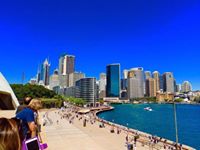Where is the Barbary Coast?
The Barbary Coast, or Berber Coast, was the term used by Europeans from the 16th until the 19th century to refer to much of the collective land of the Berber people. Today, the term Greater Maghreb or simply "Maghreb" corresponds roughly to "Barbary". The term "Barbary Coast" emphasizes the Berber coastal regions and cities throughout the middle and western coastal regions of North Africa – what is now Morocco, Algeria, Tunisia, and Libya. The English term "Barbary" (and its European varieties: Barbaria, Berbérie, etc.) referred mainly to the entire Berber lands including non-coastal regions, deep into the continent, as seen in European geographical and political maps published during the 17–20th centuries.
The name is derived from the Berber people of north Africa. In the West, the name commonly evoked the Barbary pirates and Barbary Slave Traders based on that coast, who attacked ships and coastal settlements in the Mediterranean and North Atlantic and captured and traded slaves or goods from Europe, America and sub-Saharan Africa which finally provoked the Barbary Wars. The slaves and goods were being traded and sold throughout the Ottoman Empire or to the Europeans themselves. The term 'berberi' is an often-used diminutive term referring to dark to black-skinned individuals throughout the Middle East.







